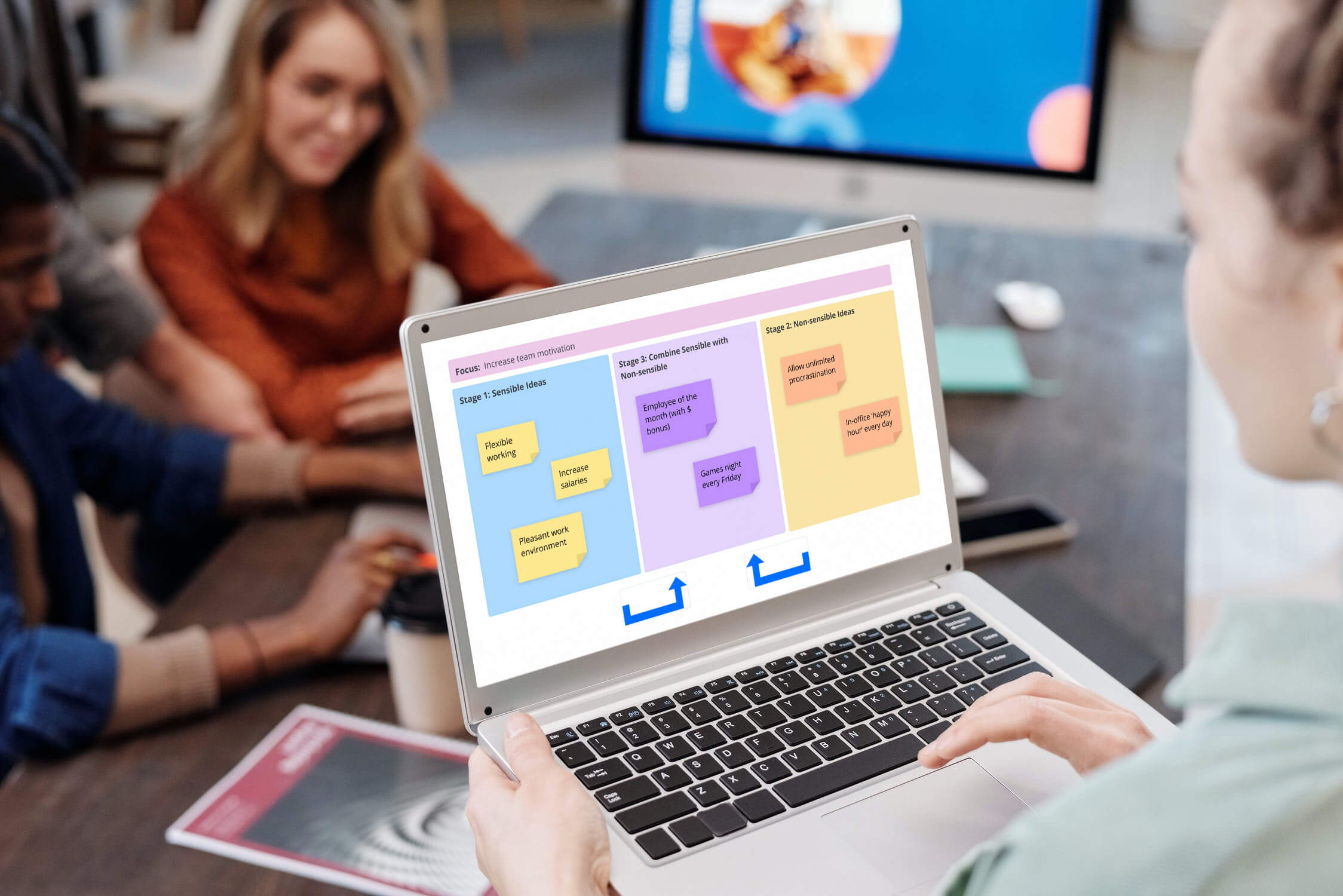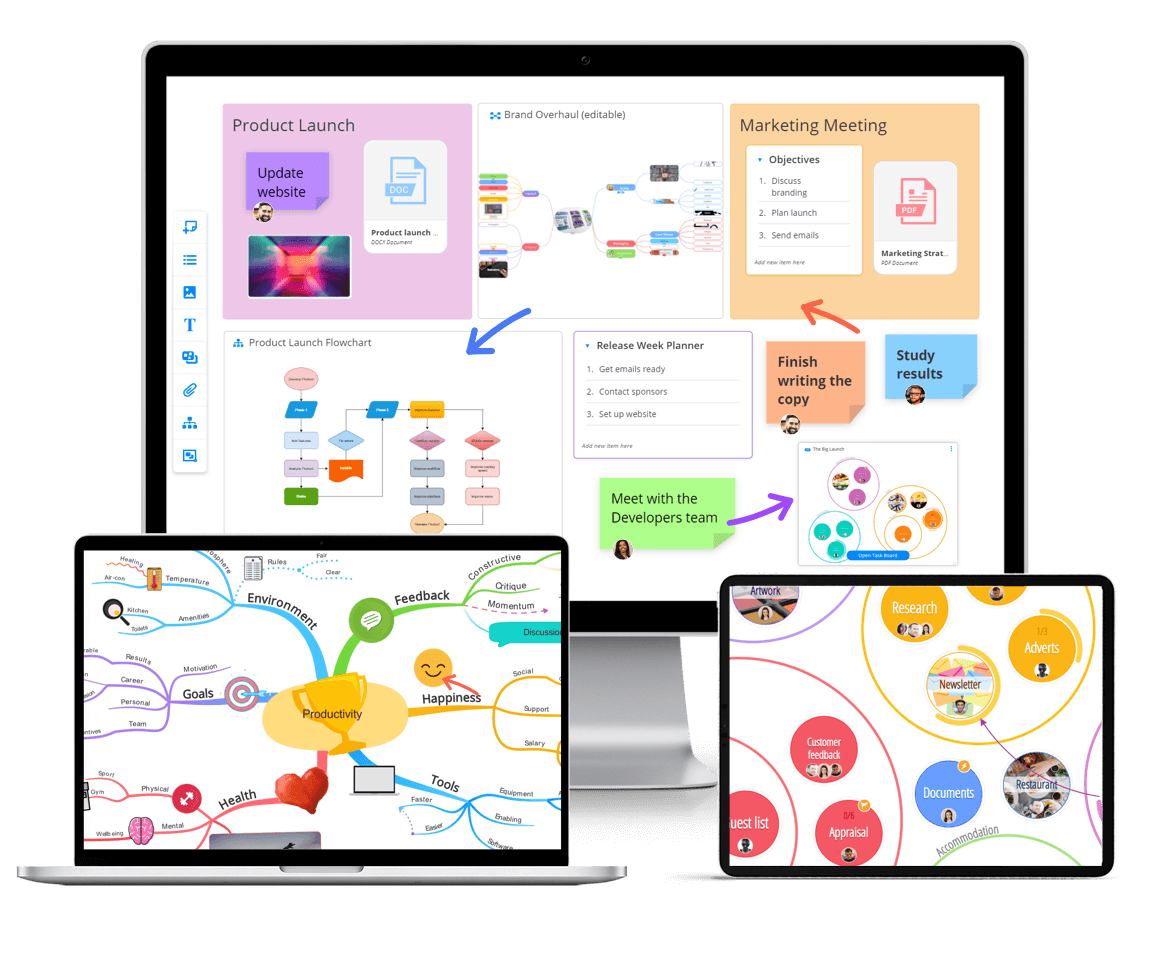June 3, 2021
4 effective thinking techniques you should be using

The average person has over 6,000 thoughts a day. We like to think that we are in control of the direction of those thoughts, but the reality is that much of our thinking is unconscious and reactive. Needless to say, being able to think effectively is important to just about every role, job, and sector – whether you’re a student revising for a big exam or a business manager trying to implement a strategy for growth. In all other areas of life, we implement tools and then practice to enhance our abilities; speaking is something we do every day, yet we still write speeches and practice before delivering one – so why doesn’t the same go for our thinking?
Using the following thinking techniques is a sure-fire way to make decision-making, problem-solving and idea generation easier than ever before. Read on to find the most effective thinking techniques you and your team can use to make the best of every workday.
1. Reverse Brainstorming
I know, I know – it sounds counterintuitive – but reverse brainstorming is a powerful problem-solving and creative thinking technique that can be applied to a vast range of scenarios. You know how it is, when facing a challenge or specific problem trying to summon a solution out of thin air often feels borderline impossible. But what if you were to flip the whole thing on its head – say you’re looking to acquire more customers, well, instead, try brainstorming to lose customers. You can do this by first stating the opposite of your problem – in this instance, losing customers – then generating a few ideas on how to achieve that. For example, you might decide to implement sloppy customer service or a complicated purchasing process. Once you’ve got a few ideas, use the “negative” examples as jumping-off points to generate actual, creative ideas to reach your genuine goal (such as offering stellar customer service and a simple, streamlined checkout process). This thinking technique works so well because it forces you to move out of old, frustrated thinking patterns – try it, and you’ll be amazed by the new, innovative ideas that come your way.
2. Six Thinking Hats
Being creative in collaboration with others can sometimes be a challenge. One common problem faced by teams is achieving structure without restricting free, innovative thinking. Luckily, with the Six Thinking Hats technique – inspired by Edward de Bono’s methodology – you can achieve both structure and creativity. The technique works by getting teams to think from the same perspective at the same time – this creates dynamism and, by the end, should provide a panoramic view of the whole team’s best ideas.
In order to use this, every team member must put on six metaphorical thinking hats. Much like a choir singing in unison, the idea is to elevate the overall idea generation through the power of unified thinking. The Six Hats are differentiated by color and are listed below:
The White Hat: Facts – What do you already know or need to find out?
The Yellow Hat: Benefits – What are the positives, values and benefits?
The Black Hat: Cautions – What might go wrong?
The Red Hat: Feelings – How does it make you feel? Consider fears, likes and dislikes.
The Green Hat: Creativity – What are the possibilities and alternatives?
The Blue Hat: Process – Usually the session leader wears this hat and is responsible for organizing the process and ensuring that the Six Thinking Hats guidelines are followed.
The really important thing when using this technique is to make sure all the relevant thoughts are captured at each of the six stages of thinking. In order to do this, we recommend using a template, like this one in Ayoa, so you can take action on the numerous ideas uncovered during a collaborative ideation session.
3. Combinational Creativity
Have you ever noticed how the best ideas sometimes sound a little… crazy? Ideas, and creativity, are all about fusing pre-existing bits of knowledge together to form something new and original. Often the outcome can be a little bit wacky, especially at first. Of course, the challenge for most of us is being able to generate ideas that are both practical and novel, after all, we are all limited by certain practicalities when operating within the workplace. And herein lies the genius of the Combinational Creativity thinking technique. This formula is perfect for finding creative solutions and generating game-changing ideas. To use it, you need to pin down your focus or goal first (i.e. recruit more top talent). From here, you write down sensible ideas on how you could achieve this and then list non-sensible ideas on achieving it. At the end, you fuse both the sensible and the non-sensible ideas together to come up with winning ideas that are both practical and innovative – it’s a win-win!
4. Empathy Map
Last, but certainly not least, is a brainstorming tool known as an ‘empathy map’. There are few bigger business challenges than understanding customers’ and stakeholders’ needs. No matter what your role or sector, there is always a target audience with continually evolving pain points; catering to them is the secret to business success. Empathy maps are traditionally used as the initial step in the “Design Thinking” process which is used to split problem-solving into five crucial stages (you can read more about this here). However, an empathy map can still be used alone in order to better understand your target audience with findings that can then be actioned to meet your customer’s needs.
To use an empathy map, you must empathetically fill out four sections identifying what your customer: says (what you hear from your target audience), thinks (what they privately think to themselves about your product or service), does (the actions they take while using your product or service) and feels (how they feel about your product or service and relatedly to the problem it solves). It’s important when using this thinking technique to really put yourself in the mindset of your customer in order to eliminate any lingering bias. By mapping out the full scope of a customer’s thoughts and feelings, you can more effectively plan to improve in every area.

Get started with Ayoa
Ready to start using these four effective thinking techniques in your everyday work life? Find templates for these techniques and more in Ayoa.
Get started for free